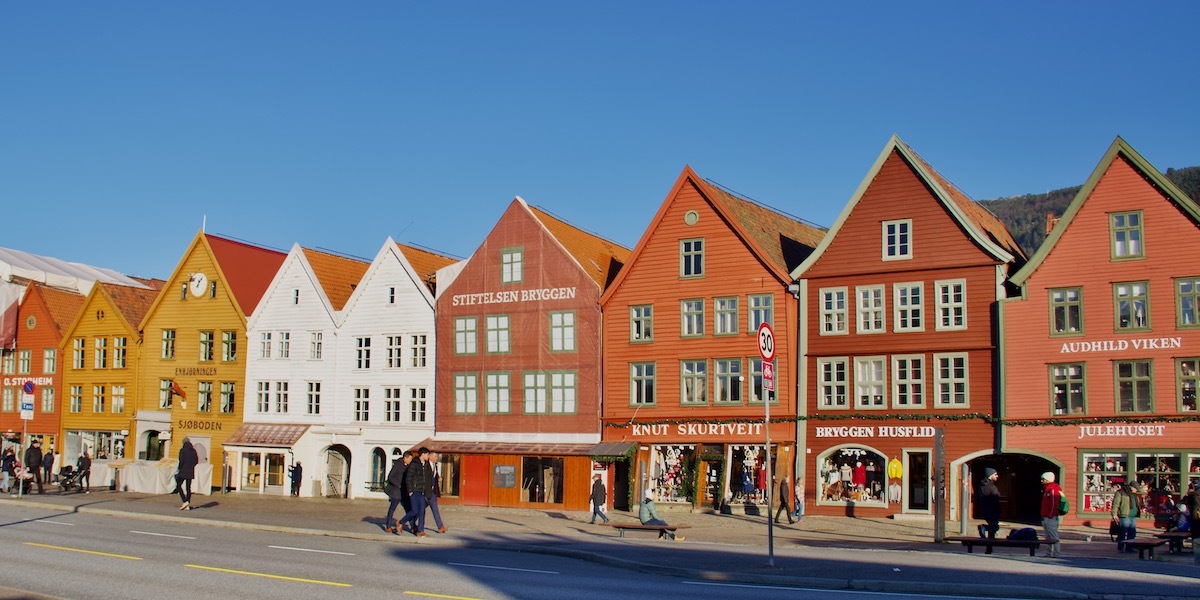
Bergen, Norway’s second biggest city is a designated City of Gastronomy and a member of the UNESCO Creative Cities Network.
Bergen has been an important trading centre since it was founded in the eleventh century and was chosen as a base for the Hanseatic League. It was the capital of Norway in the thirteenth century and its largest city until the beginning of the nineteenth century. This beautiful city on the southwestern coast has been called the “city of seven mountains” and “the gateway to the fjords” – descriptive titles that reflect its stunning location. There is no better way to acquaint yourself with the splendour of Bergen than an early morning ascent to the top of Mount Fløyen on the Fløibanen Funicular.
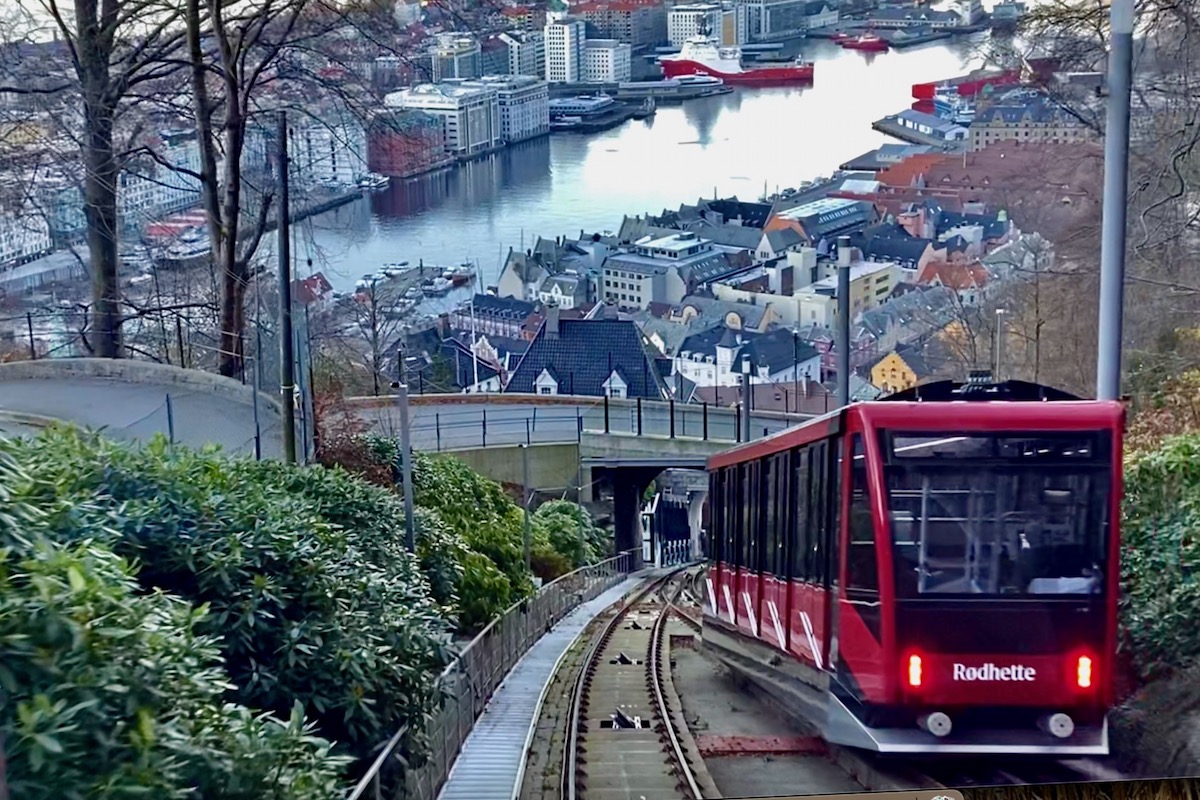
Fløibanen Funicular and Mount Fløyen in Bergen
The Fløibanen Funicular began operating in 1918. Since the 1950s it has maintained the tradition of a red carriage, Rødhette (Little Red Riding Hood) and a blue carriage Blåmann (Blueman). It is one Bergen’s most popular attraction and the best time to take a ride on it to the top of Mount Fløyen is early morning. The ticket office and terminal are close to the fish market and Bryggen wharf. The views over Bergen riding up to the top of the mountain are stunning. A large viewing terrace at the top means every angle of the panorama below is visible.

Behind this viewing terrace is a restaurant, Fløien Folkerestaurant is lovely venue for an evening meal and special occasions as the Fløibanen runs until late evening. The Fløistuen shop & café next to the station offers drinks and food. Walkers taking advantage of the many trails from the top station can find rest and refreshment at Brushytten and Skomakerstuen, a cosy café beside Lake Skomakerdiket. There are three stations on the way to the top Promsgate, Fjellveien and Skansemyren. On the way back down, get out at Promsgate and wander through the narrow cobbled streets of the historic wooden city of Bergen.

The Old Wooden Town of Bergen
The majority of the buildings in this area are constructed from wood. As the town expanded every possible space was filled with buildings of different sizes and shapes. These buildings are now protected and are preserved. Patterns in the cobbled stones of the narrow streets had a practical purpose – the ingenious use of a long stick in the groves down the centre of the street would slow down horse-drawn carts carrying open barrels of sewage.
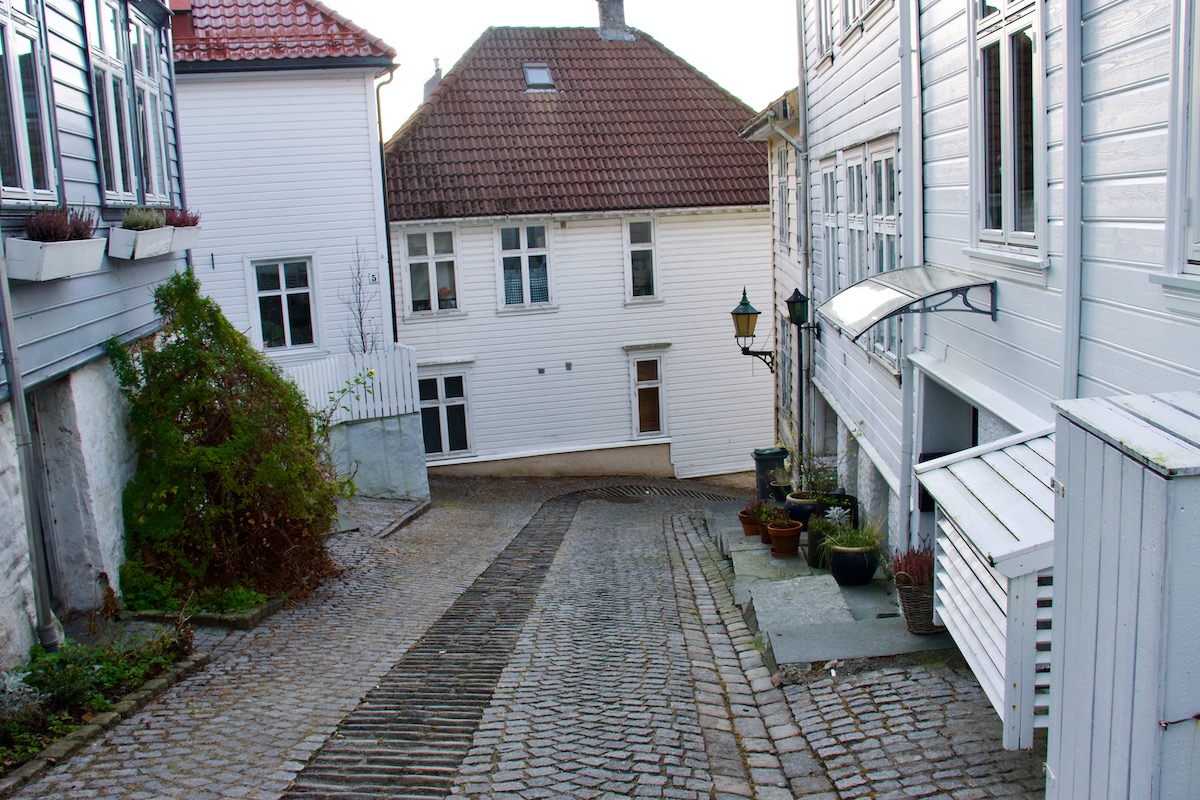
St Mary`s church is the oldest building in Bergen but was built in stone rather than wood sometime between 1130 and 1170. Although this church was badly damaged by the two great fires of 1198 and 1248 it has been in use continually since the early medieval period. The west front of this church is unlike any other church in Norway. This church is very close to Bryggen, the Hanseatic Wharf and a UNESCO listed site.
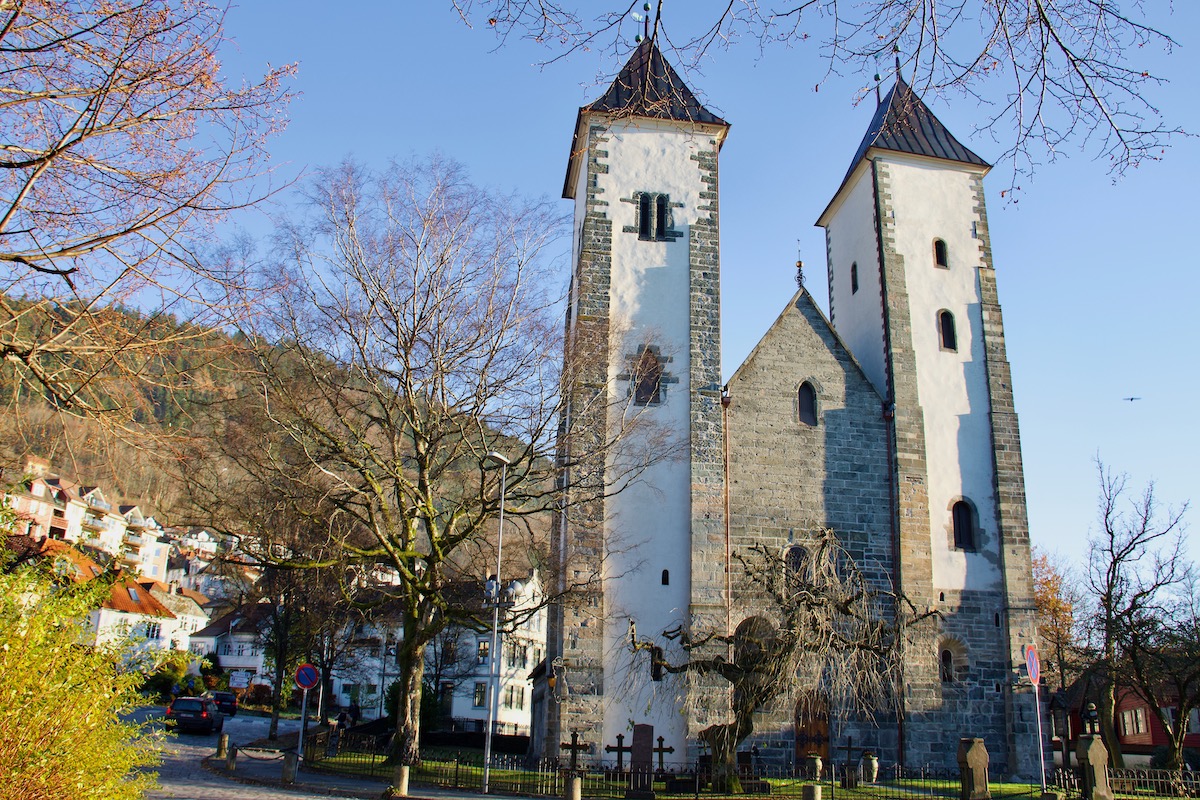
Bryggen, the Hanseatic Wharf in Bergen
In 1350 the Hanseatic League, a powerful German trading alliance, established one of its four overseas offices in Bergen. As their influence grew they took over the area now known as Bryggen and built store rooms, workshops and homes for their members. Initially they exchanged grain for stockfish (essentially dried cod). Their trading activities expanded until Bryggen in Bergen was established as one of the most important trading centres in Northern Europe. It retained this position until 1754. The wooden buildings of Bryggen are not the original buildings but retain their original characteristics. They include the Hanseatic Museum and the Schøtstuene which form the World Heritage Site Bryggen that was added to UNESCO’s World Heritage List in 1979. Hanseatic merchants no longer live in the city but their influence lingers on in the colourful wooden buildings facing the harbour. Opposite these buildings is the Dramshusen shed
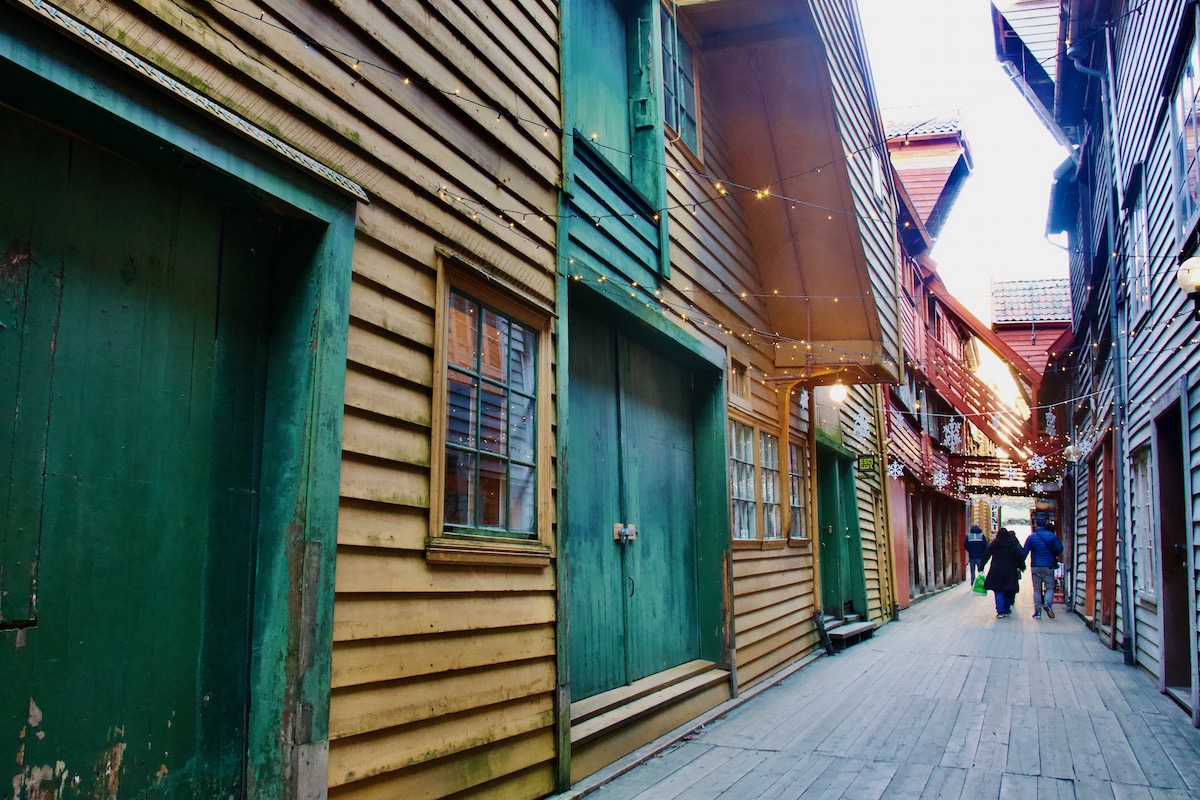
The Dramshusen shed, part of the Hanseatic Museum, was used to store goods waiting to be shipped or transferred to the Hanseatic storage rooms. Each tenement in Bryggen had a shed on the harbour which was shared by all its tenants. These sheds had a hoisting boom, a landing stage and an inside toilet. Prices for goods arriving in Bergen would be set at a meeting in this humble building. The reconstructed shed belonged to Dramshusen, a tenement that was destroyed in the late nineteenth century. Cargo booms, a lifting device operated by a few people, were in use until the beginning of the twentieth century.
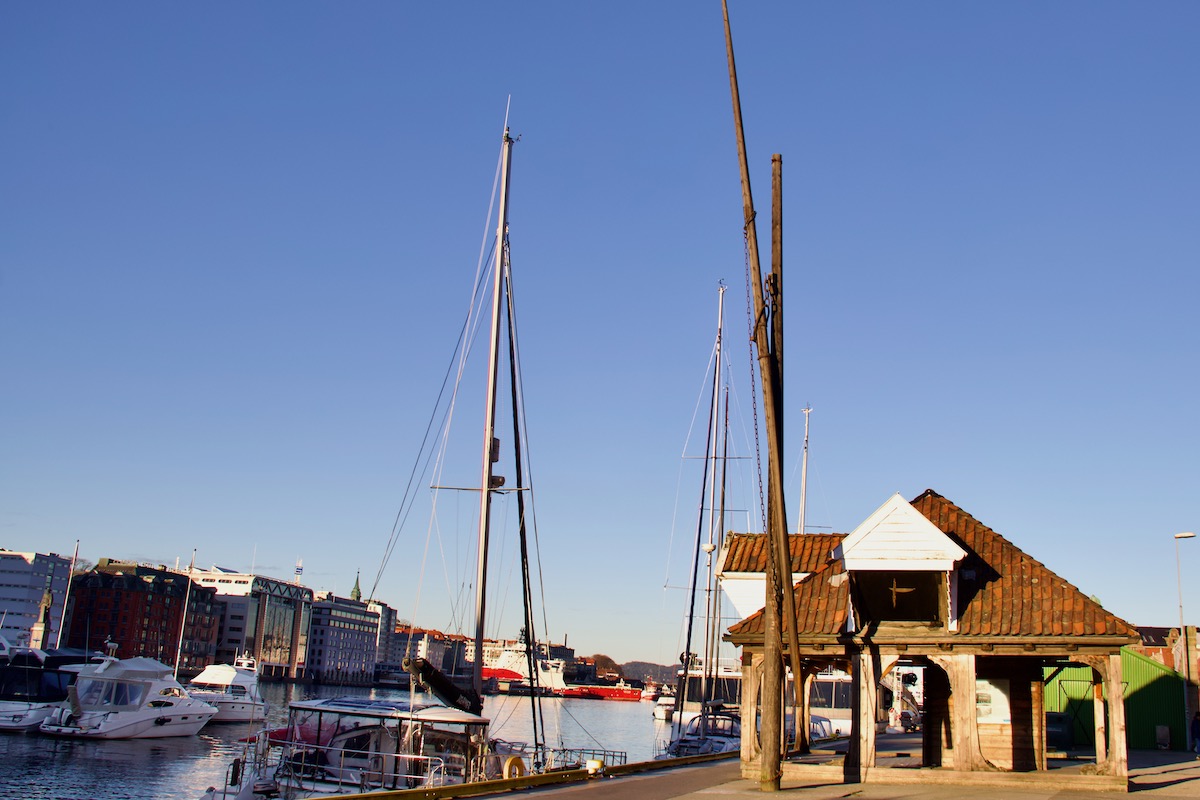
The Hanseatic museum tells the story of the German merchants when they were based in Bergen. It is housed in one of the oldest, best preserved wooden buildings in Bryggen. Johann W Olsen founded this museum in 1872 to preserve the old traditions of Bryggen. The museum is based on his own tenement, Finnegården. Olsen’s son inherited the museum and managed it until it was acquired by the city of Bergen in 1916. The museum also incorporates Schøtstuene at the far end of Bryggen. These buildings were the assembly rooms of the Hanseatic traders and they had hot meals here in the winter. Three of these rooms and a cookhouse remain but originally each tenement had a Schøtstuene with a free-standing cook house. These stone buildings were the only ones that were heated due to the fire risk. The restaurant, Bryggen Tracteursted, features one of the original Hanseatic dining rooms and always has stockfish on the menu. Looking down on Bryggen from the far end of the harbour is the medieval Rosenkrantz Tower.
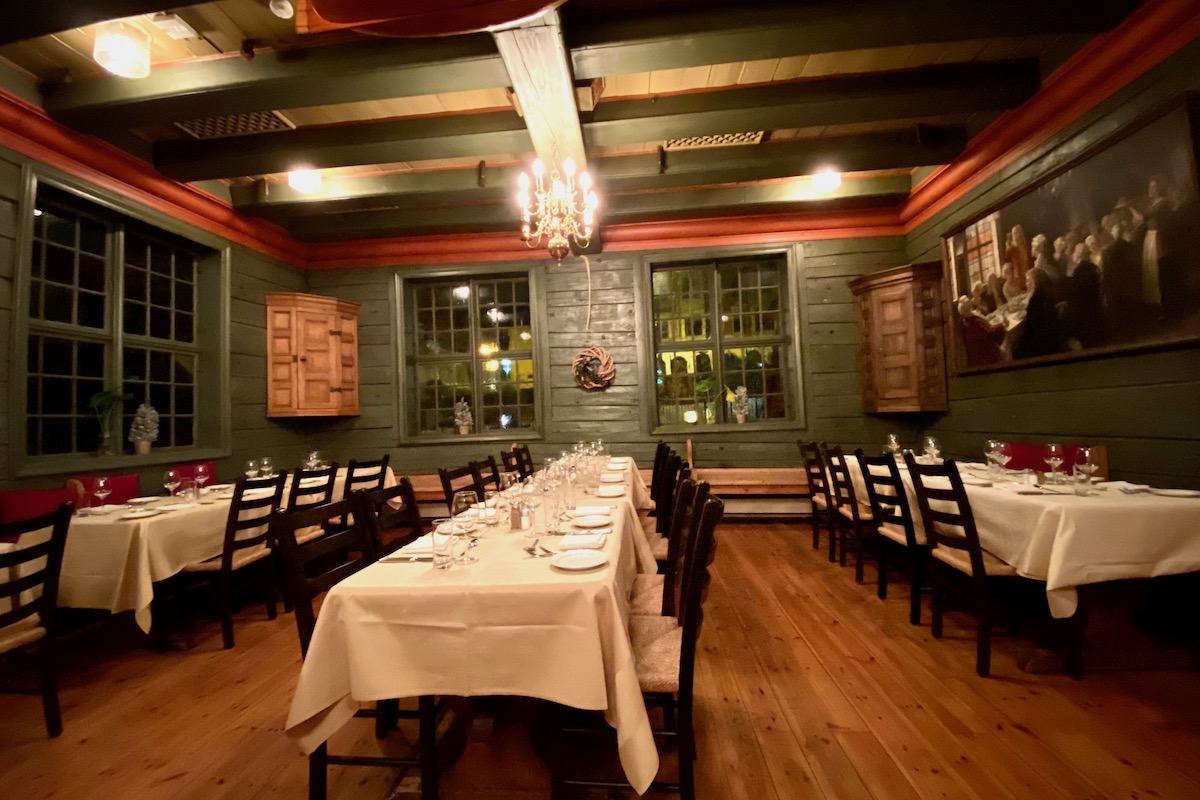
Rosenkrantz Tower in Bergen
Rosenkrantz Tower was built by a king in the thirteenth century and expanded by a governor (Rosenkrantz) during the sixteenth century. Today, it is one of the most important renaissance buildings in Norway. It has housed kings, governors, military personnel and criminals. Visitors can explore the tower from its small prison in the cellar and climb to the balcony on top. Canons once placed on the top pointed both out to sea and towards Bryggen reflecting the huge distrust the local residents had for the German community in Bryggen. Close to the tower is another medieval marvel, King Håkon’s Hall.

King Håkon´s Hall in Bergen
Håkon Håkonsson built this hall between 1247 and 1261 when he was king of Norway and Bergen was the most important city in the country. It was his royal residence and banqueting hall. When his son married a Danish princess it seated 2000 guests. To this day the hall has retained its importance as a venue for national and international events. Both Rosenkrantz Tower and King Håkon´s Hall are part of the Bergenhus Fortress. Entrance fees apply to the historic buildings but not to the grounds around them.
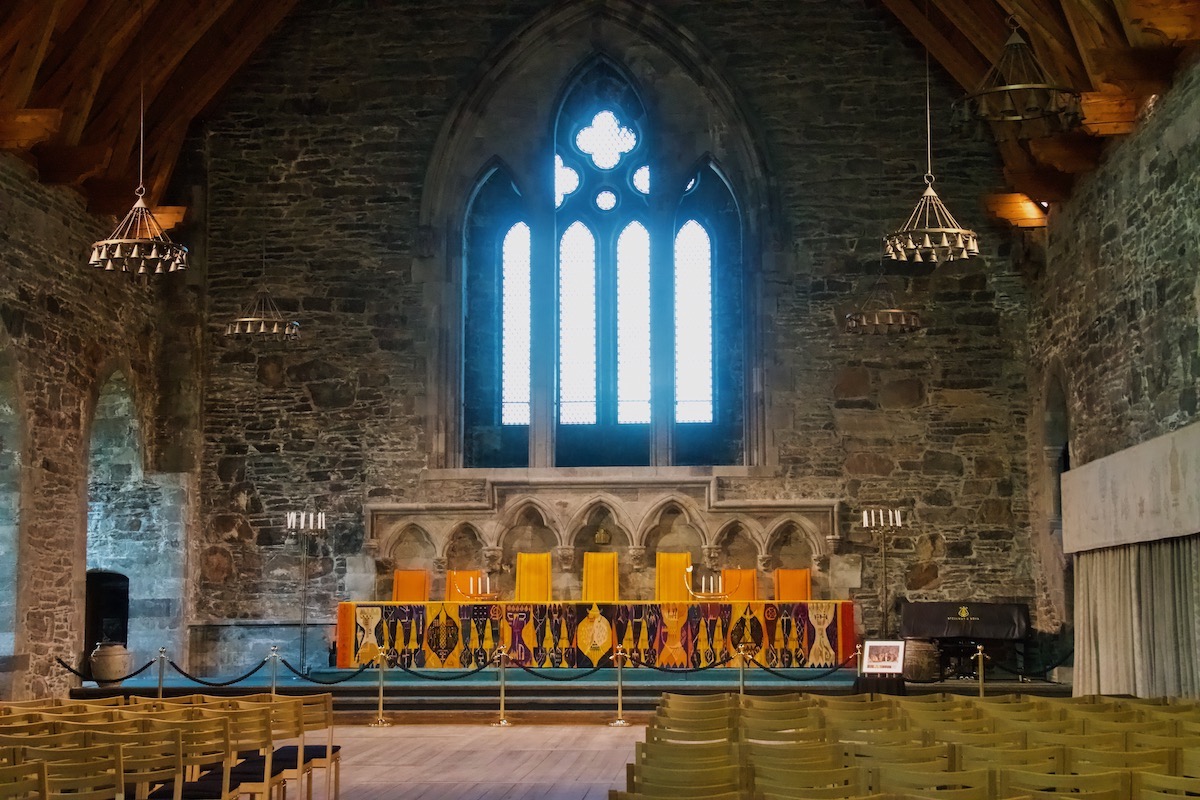
Bergenhus Fortress in Bergen
Construction of the Bergenhus fortress began in the sixteenth century and it was finally completed around the beginning of the eighteenth century as it was continually being reinforced. In World War II the German occupying force used Bergenhus as their western headquarters. During this period the reinforced bunker at its centre was built by Soviet prisoners of war. Once the war had ended the Norwegian government undertook major restorations of this area. Some of the buildings are still used by civil and military personnel but the fortress grounds are open to the public. This area is also a popular venue for public events. A complete contrast to the medieval fortress is the large modern building that houses the fish market.

The Fish Market in Bergen
The traditional outdoor fish market in Bergen was brought indoors in 2012 when a new building was constructed by the harbour to house it and the Tourist Information office. On nice days some stalls are still set up along the harbour’s edge. But essentially the old outdoor market has ceased to exist and locals buy their fish straight from the boats or the local supermarkets. The indoor fish market has become a popular tourist attraction featuring fresh fish and seafood stalls as well as restaurants.
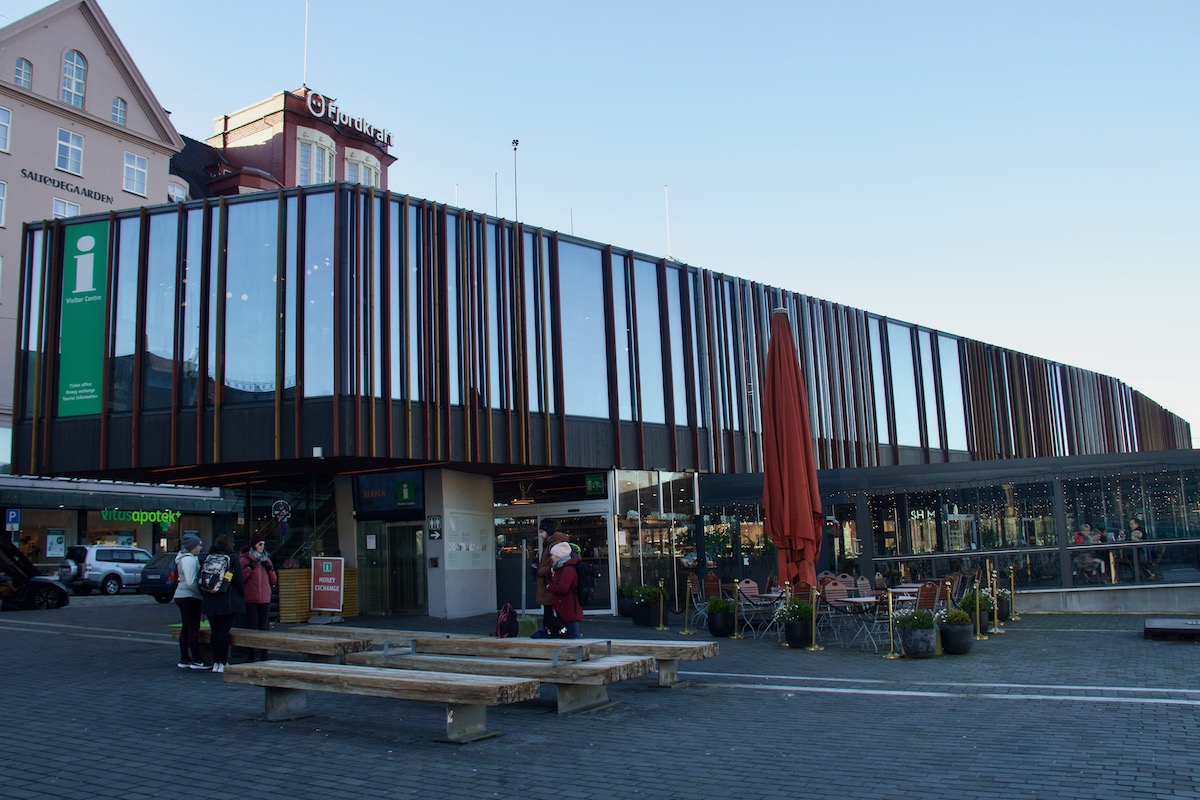
In 2015 Bergen became a designated City of Gastronomy and a member of the UNESCO Creative Cities Network. These cities collaborate internationally promoting various aspects of food including creativity and sustainability. The food culture of Bergen is considered the most sustainable in Europe and visitors can learn about its traditional fare and the culture relating to them on a food tour. A favourite venue on the food and culture tour is Dr Weisener’s Café also known as the cider café as it serves a variety of ciders produced from locally grown apples. This café used to be a public bath designed and built by Dr Weisener to be used by the working class population of this area. People would queue here on a Saturday night to be ready for church on Sunday. Today the café operates as a local co-operative serving traditional food with the exception of Friday evening which is tacos night.

Where to eat in Bergen
Bryggen Tracteursted is a traditional Bergen restaurant in Bryggen. It is one of the few restaurants here that always has stockfish on the menu. This unsalted fish, usually cod, is dried outside on wooden racks. Norway has exported stockfish since the medieval period. The Bryggen Tracteursted offers fine dining and friendly service in a cosy wooden building in the historic Bryggen area.

Frescohallen occupies the ground floor of a former stock exchange. A modern all-day restaurant and bar blends seamlessly with the exquisite frescoes by Axel Revold that decorate the walls that surround it. An extensive menu focuses on seafood using local and fresh ingredients. The food is delicious and the atmosphere informal and relaxed.
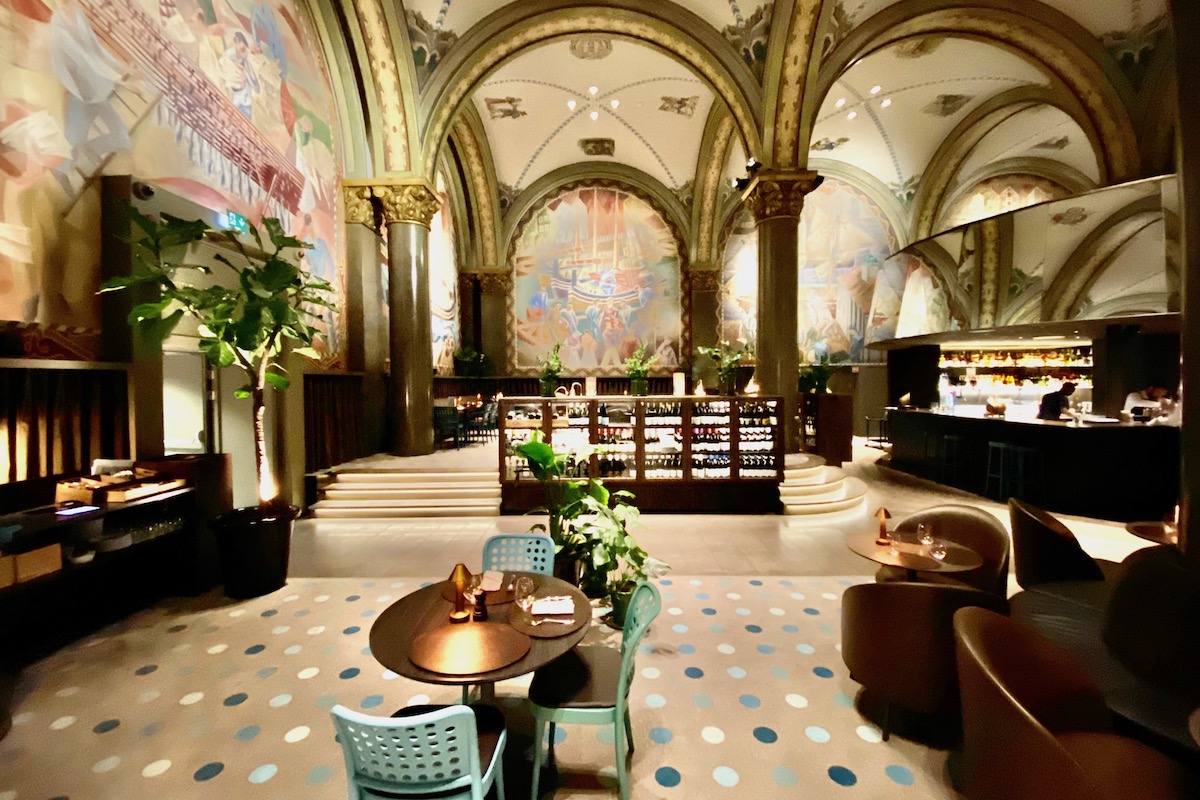
Where to Stay in Bergen
Clarion Collection Hotel Havnekontoret is a fashionable hotel occupying a neoclassical stone building built in the 1920s and next door to historic Bryggen. The comfortable, well-appointed rooms look out on either Vågen Bay or the hotel garden. A clock tower with views across the city and several cosy sitting rooms are features of this lovely hotel. Breakfast is an extensive, tasty buffet. A great place to stay while in Bergen.
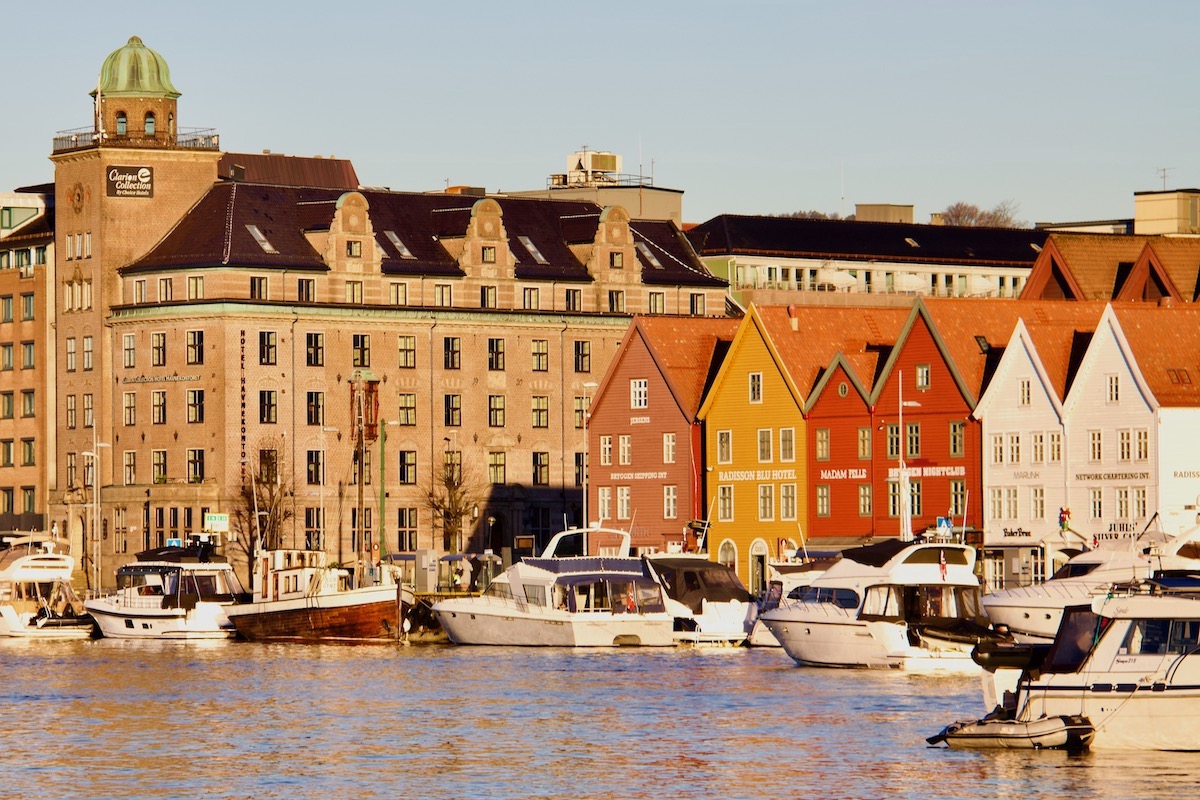
Getting to Bergen
Norway’s leading domestic airline, Widerøe, offers daily flights from London Heathrow to Bergen and twice daily flights from Aberdeen to Bergen. It also offers several daily flights from Bergen to other Norwegian cities including Trondheim, Tromsø and Bodø, offering great opportunities to combine trips to the fjords and to the north of Norway.
For more information about the attractions mentioned in this feature go to Visit Bergen
Available on GPSmyCity.com
This article is now featured on GPSmyCity. To download this article for offline reading or travel directions to the attractions highlighted in this article, go to Walking Tours in Bergen on GPSmyCity
Valery Collins is the Experienced Traveller
 An excellent raconteur, Valery has been writing about her experiences on the road since she started travelling 25 years ago. After publishing four books she turned to online travel writing.
An excellent raconteur, Valery has been writing about her experiences on the road since she started travelling 25 years ago. After publishing four books she turned to online travel writing.